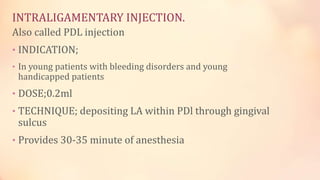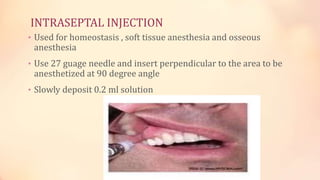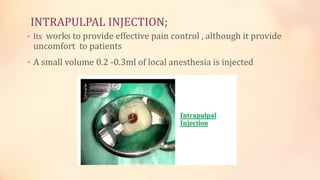This document describes various techniques for local anesthesia in dentistry. It discusses suprapapillary, intraligamentary, intraosseous, intraspetal, and intrapulpal injections. It also covers the maxillary injection techniques including posterior superior alveolar nerve block, middle superior alveolar nerve block, and anterior superior alveolar nerve block. Mandibular nerve injections discussed include inferior alveolar nerve block, mental nerve block, long buccal nerve block, and Gow-Gates mandibular nerve block. Landmarks, areas anesthetized, techniques, and indications are provided for each type of local anesthesia.







































